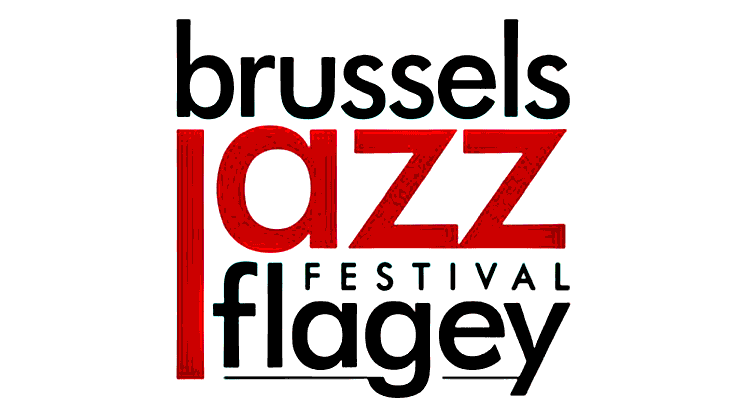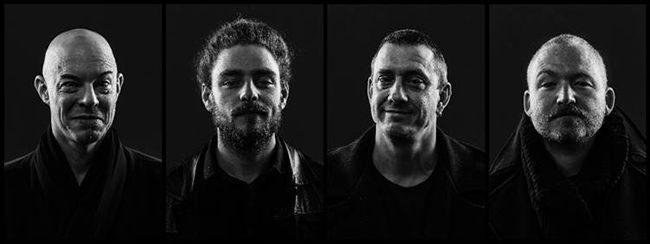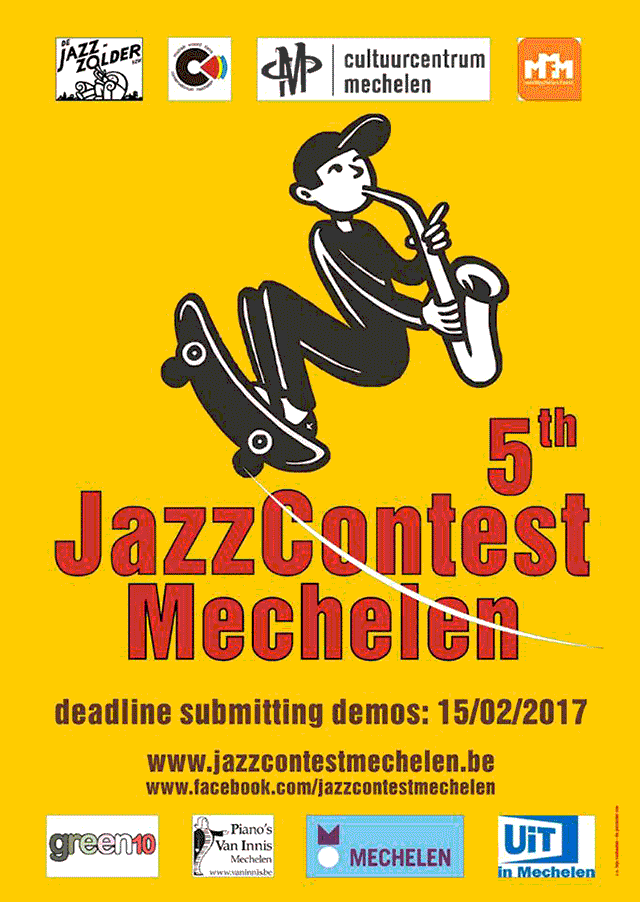|
- persbericht -

20/1/2017
Nik Bärtsch’s Mobile Extended Jazz
100! | Brussels
Jazz Festival
Flagey Brussel
Nik Bärtsch, Sha,
Kaspar Rast, Nicolas Stocker, Etienne Abelin, Ola Sendecki, David
Schnee, Solme Hong, Ambrosius Huber
21/1/2017
Nik Bärtsch’s Mobile
Handelsbeurs
Gent
Nik Bärtsch ,
Sha , Kaspar Rast, Nicolas Stocker

Mobile verovert
al vele jaren de muziekscenes wereldwijd met haar unieke amalgaan van
jazz, funk, nieuwe en minimalistische muziek, aangevuld met invloeden
uit de sacrale muziek en de Japanse cultuur.
Voor het concert in Flagey breidt de Zwitsers toetsenist en componist
Nik Bärtsch zijn groep uit met een live strijkkwintet voor een nog meer
adembenemende ervaring.
Depuis de
nombreuses années, Mobile conquiert les scènes de musique du monde
entier grâce à sa combinaison unique de jazz, de funk, de musique
nouvelle et minimaliste, complétée par des influences de la musique
sacrée et de la culture japonaise.
Pour
le concert à Flagey , le claviériste et compositeur suisse Nik Bärtsch
étend son groupe à un quintette à cordes pour nous assurer une
expérience encore plus époustouflante.


NIK BÄRTSCH'S
MOBILE
CONTINUUM
MOBILE
Nik Bärtsch: piano, comp.; Sha:
bass clarinet and contrabass clarinet; Kaspar Rast: drums,
percussion; Nicolas Stocker: drums, tuned percussion
EXTENDED
Etienne Abelin: violin; Ola Sendecki:
violin; David Schnee: viola; Solme Hong: cello;
Ambrosius Huber: cello
In the beginning
there was Mobile. Now, after three ECM studio recordings and a live
double album with his other band Ronin, Swiss keyboardist and composer
Nik Bärtsch presents a new album with his original all-acoustic group,
here augmented on three pieces by a string quintet.
Founded in 1997
Mobile is effectively the wellspring of Bärtsch’s ritualistic approach
to music making, nourished by his concepts of reduction and repetition
as well as his fascination with Japanese culture. Here textures from
jazz, funk, new music, minimal as well as ritual and sacred music are
organically interwoven. Bärtsch and his partners Kaspar Rast, Sha and
Nicolas Stocker aim for an energetic total group sound rather than
displays of soloistic virtuosity.
Behind Bärtsch’s
original decision to step away from conventionally interacting ad-hoc
ensembles was a wish to explore musical and social energies more deeply
with a group based on the idea of continuity at multiple levels. This
“musically-focused community”, as Bärtsch calls it, has played concerts
of marathon durations – up to 36 hours – in which music, lighting and
performance space design, video arts and swordsmanship have been brought
together.
After establishing
these complex artistic rituals with Mobile, Ronin was founded in order
to address the musical material more flexibly and directly. The group’s
recordings include the ECM albums Stoa (2006), Holon
(2008), Llyrìa (2010) and Ronin Live (2012), with
concert recordings from 2009 to 2011.
In both ensembles
Bärtsch tenaciously embodies a pragmatism in line with the classic creed
of Asian martial arts: practice long enough and what you have practiced
will change by itself, if you are alert and ready. Accordingly, a
musical system may take on a momentum and development of its own through
the steady power of repetition.
With Mobile Extended
– the core band plus the string players – Bärtsch presents the chamber
music aspects of his musical thought. Mobile’s music is organized in
what Bärtsch calls ‘modules’ and it develops spirally. Its structures,
based on the repetition of certain elements, may remind listeners of the
pulse patterns in minimal music. But in contrast to ‘classic’ minimalist
works by Riley, Reich or Glass, Bärtsch’s pieces are propelled through
rhythm and beats rather than through floating pulsations.
“The way we organize
our ‘modules’ rhythmically is more related to certain strategies of
Stravinsky or Ligeti, to funk or to certain kinds of ritual music than
to classic minimalism, which tends to use a more linear rhythmic
Pointillism. We shape rhythm as a vehicle for dramaturgy: we are
interested in its spin and its potential as an acoustic picture puzzle,”
Bärtsch explains.
He cites an early
piece by György Ligeti, the Continuum for Harpsichord of 1968, as
an important influence. Together with the vision of a continuous spiral
development of the group it has inspired the title of the new album.
Also it gave impetus to ‘Modul 5’ – with Schwarzweiss, a piece by
Zurich composer Edu Haubensak from 1979 – functioning as a kind of
intermediate stop. Ligeti’s rhythmic finesse, his interest in New Music
and his quest for new solutions in combining old and new music have
inspired Bärtsch’s artistic approach.
While the music on
Continuum strictly follows Bärtsch’s compositional logic it also
conveys a sensuous physicality, thriving on conceptual juxtapositions as
it seeks freedom through clear flexible systems and the interplay of
structure and surprise, pathos and irony.
Continuum
was recorded at Lugano’s RSI studio in March 2015 and produced by
Manfred Eicher.
|
![]()

![]()
